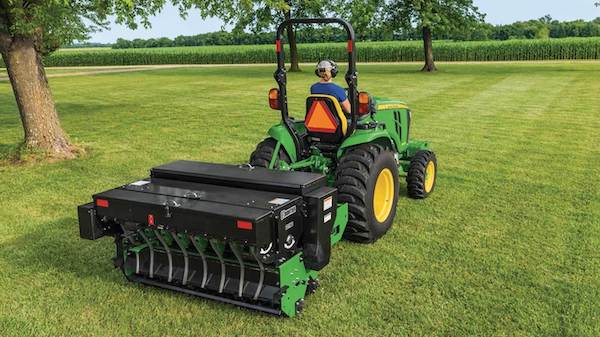The History of the John Deere Seed Planter
John Deere seed planters allow producers to plant crops such as soybeans, corn, sugar beets, cotton and popcorn at relatively high speeds (up to 10 mph). But, where did this all start?
Keep reading to learn about the most critical moments in the history of the John Deere seed planter.
What is a Seed Planter?
A seed planter is a type of machinery that sows seeds in rows. Seed planters are typically attached to the rear of a tractor, and used to plant a variety of crops including corn, wheat, vegetables, and soybeans.
When Was the John Deere Seed Planter Invented?
With high demand and need for an accurate corn planter, Charles Deere and Alvah Mansur teamed up to manufacture these planters under the company name, “Deere & Mansur Company.” Soon after, they released the Deere Rotary Adjustable Corn Planter. Due to the product being a massive success, they moved to a larger location and continued innovating.
When Was the Center Lever Corn Planter Invented?
The next large success for Deere & Mansur was the introduction of the Deere Center Lever Corn Planter in the late 1800s. This piece of equipment featured a center lever—designed to raise or lower the runners with ease. While this piece of equipment was built for ease-of-use, they also built another successful product that focused on accuracy—the Accumulative Single-Kernel Drill Planter (which increased accuracy by 15 percent) as well as the Edge Drop Planter. The Edge Drop Planter metered seeds out by their thickness, as opposed to by their length, while also increasing planting accuracy.
When Was the Check-Row Corn Planter Invented?
In 1911, Deere & Mansur was acquired by Deere & Company. Just before this acquisition, they had released the No. 9 Check-Row Corn Planter, which was later dubbed “the foundation of John Deere planter leadership” because of its ease of use and supreme accuracy. Because of its popularity, Deere then released the following planters:
1913, No. 999 Planter
This planter hosted natural-drop seed plates, a safety fertilizer attachment, enclosure of both clutch and variable-drop gears, tongue truck, simple positive valve action and special plates to handle different types of hybrid corn.
1935, No. 450 Planter
This planter was built specifically for speed. By attaching to a tractor, this planter allowed farmers to plant 40 to 50 acres in a single day, which was transformative for the time.
1957, Four-Row 494, Six-Row 694 Planter
This planter was able to work at up to 5 mph.
1957, Four-Row 495, Six-Row 695 Planter
This planter was able to work at up to 7 mph.
1968, 1200 and 1300 Series Plateless Planters
This planter utilized a new “finger-pickup” technique. This mechanism selected seeds one at a time, which was very similar to the way a farmer would manually do this.
1974, 7000 and 7100 MaxEmerge™ Planters
This planter allowed seeds to be placed at more precise depths than ever before. Deere also introduced the Tru-Vee™ opener system this year, which used a pair of angled disk blades to cut well-formed seed trenches. Both systems propelled Deere’s planter popularity to new heights by the 1980s.
How Long Were John Deere 7000 Planters Made?
John Deere made the 7000 Planter from 1974 to 1986, which allowed seeds to be placed at a more precise depth than ever before.
Where to Purchase a John Deere Seed Planter
John Deere MachineFinder has a wide variety of used seed planters, including drawn and mounted planters. Not to mention, our inventory of planter attachments makes it easy to maximize yield potential for any field.
For more information regarding seed planters, contact your local John Deere dealer.
If you enjoyed this post or want to read others, feel free to connect with us on Facebook, Pinterest, Twitter, or Instagram.
Additional Resources:

